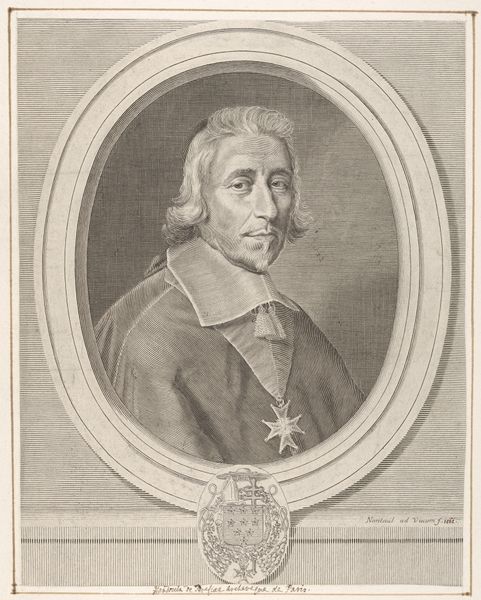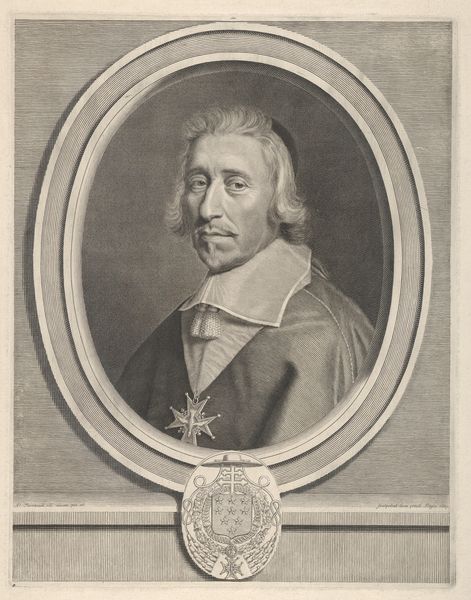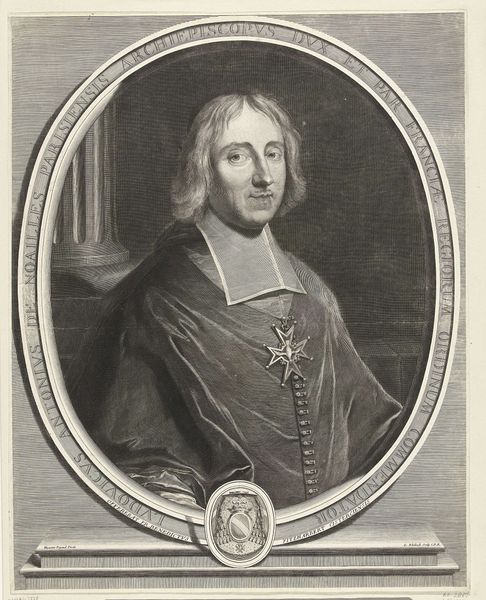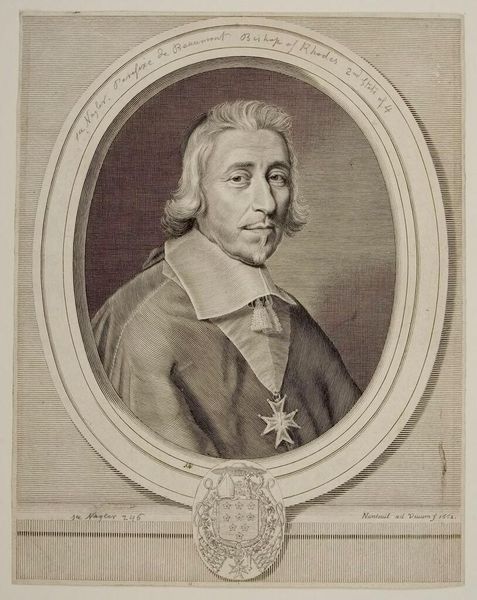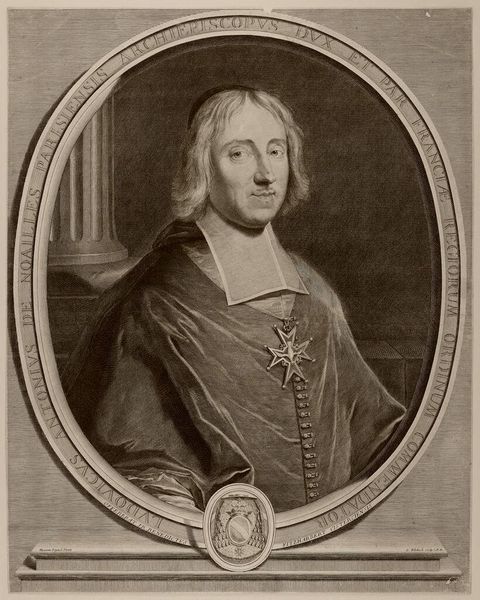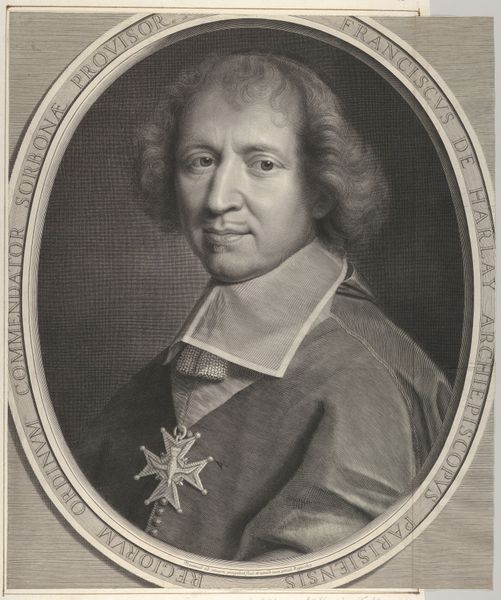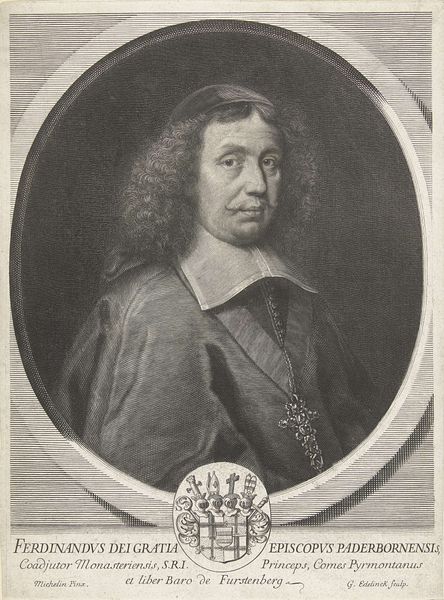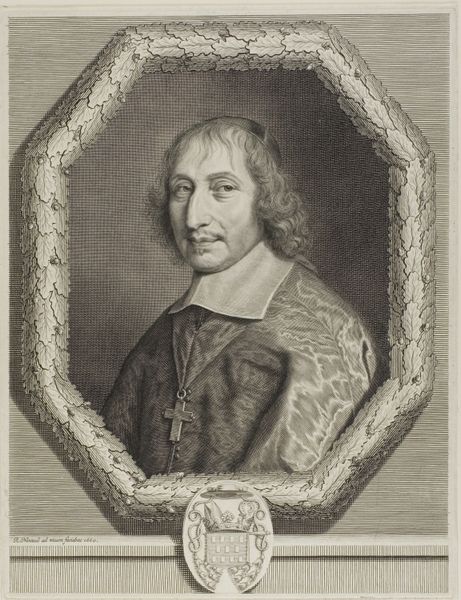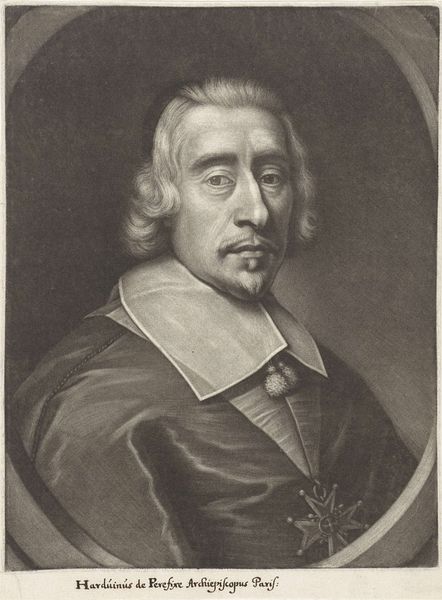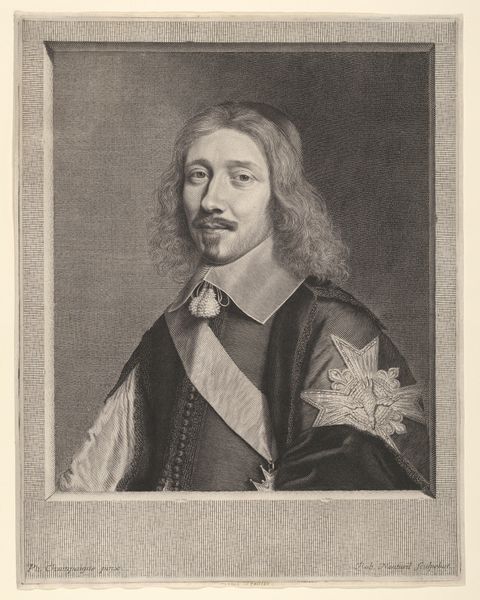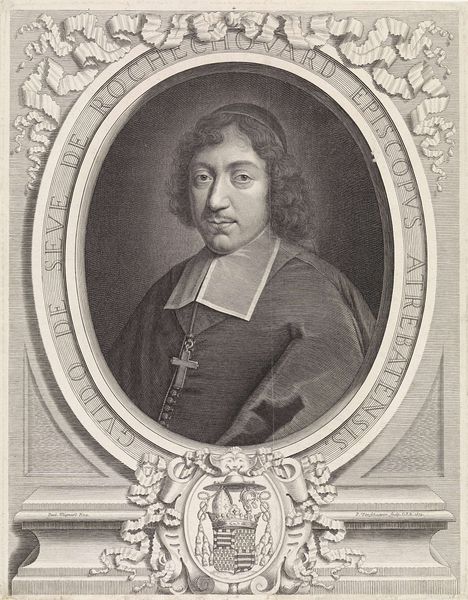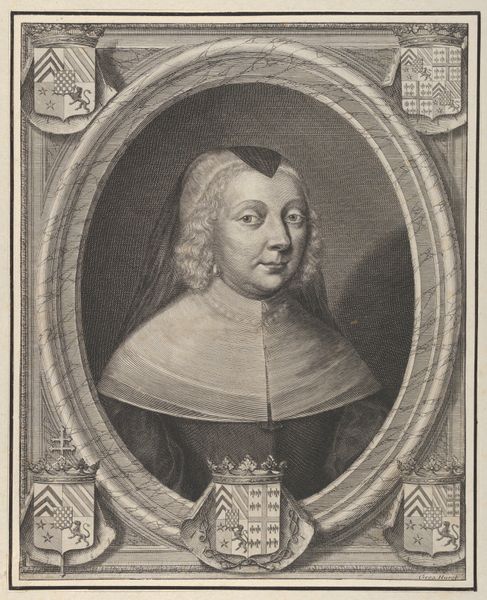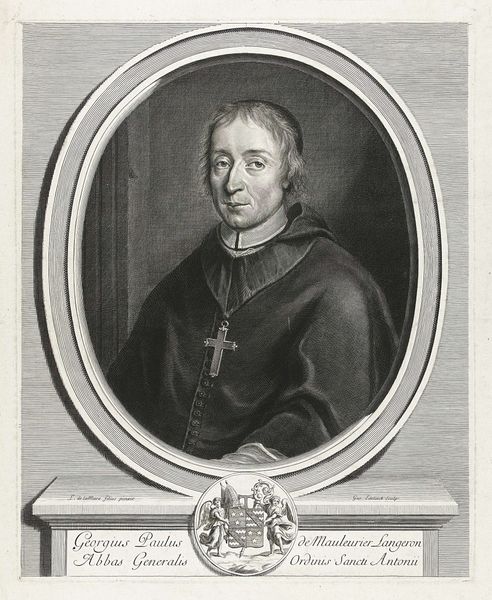
drawing, print
#
portrait
#
drawing
#
wedding photograph
#
photo restoration
#
portrait image
# print
#
charcoal drawing
#
charcoal art
#
historical photography
#
portrait reference
#
framed image
#
men
#
portrait drawing
#
fine art portrait
Dimensions: Sheet: 19 3/8 × 16 7/16 in. (49.2 × 41.7 cm)
Copyright: Public Domain
Curator: This is Robert Nanteuil’s "Hardouin de Beaumont de Péréfixe," created in 1663. It is currently located in the Metropolitan Museum of Art. What’s your immediate impression? Editor: Striking. It exudes authority, but there’s a subtle vulnerability in his eyes. I am immediately interested in the politics of religious power as captured in portraiture during this period. Curator: Indeed, Nanteuil captured a significant figure. Hardouin de Beaumont de Péréfixe was a prominent clergyman and historian during the reign of Louis XIV. But beyond the sitter, let’s consider Nanteuil’s choices in rendering him. Editor: Precisely. This portrait participates in constructing and reinforcing ideas around class, status, and masculine identity within the power structures of the French court. I wonder, how does it fit into debates on divine right or the role of the church in society at the time? Curator: Nanteuil, primarily a printmaker, had a remarkable ability to convey texture and detail through engraving. The meticulous lines create depth, and there is attention to the ornamentation of his garment, indicative of his status. Consider how those stars framing the central portrait signal celestial blessing and authority. Editor: Right. It also normalizes the role of powerful men within a specific cultural and religious hierarchy. This engraving invites us to reflect on how representation in the 17th century served to maintain asymmetrical power relationships in both religious and social institutions. I also think about its accessibility—how printmaking allows the message, and the man, to spread far wider. Curator: An excellent point! This piece serves not just as an image, but as a form of political messaging accessible across geographic and class divides. To that end, the artist himself, Nanteuil, as the image disseminator also takes on an elevated position, one with potentially vast influence, compared to a unique painting accessible to only a few elites. Editor: Analyzing these subtle markers is invaluable, reminding us how imagery participates in broader cultural and power narratives. It provokes crucial questions concerning identity and the structures upholding such ideals. Curator: Exactly! Through his detailed strokes, Nanteuil's work provides valuable perspectives not just into one man’s persona, but also into the visual strategies of power.
Comments
No comments
Be the first to comment and join the conversation on the ultimate creative platform.
